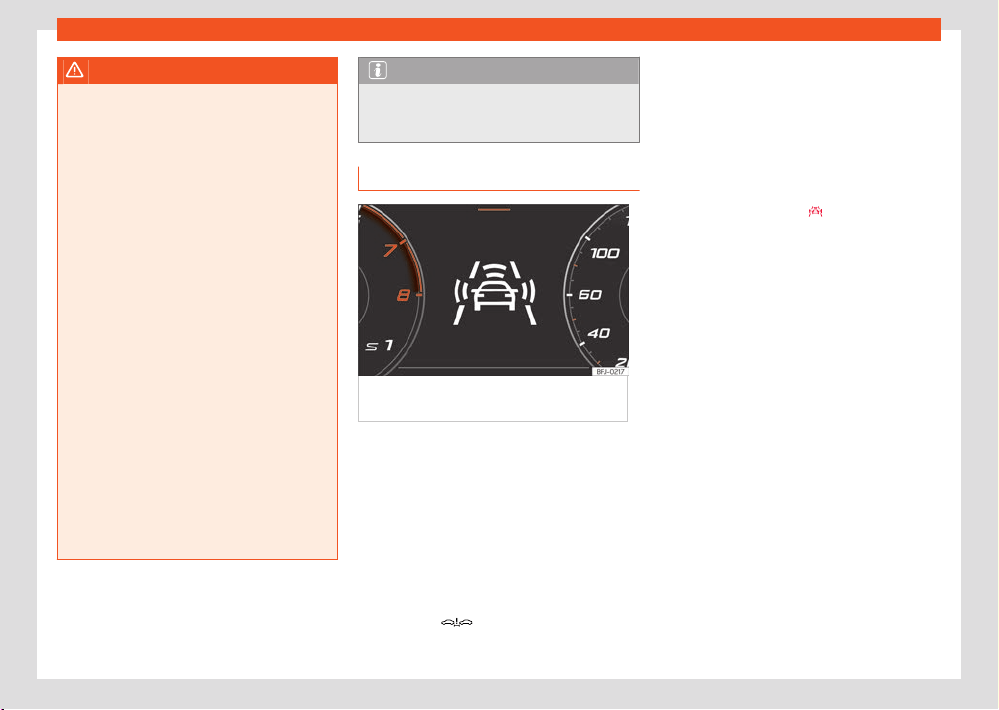Loading ...
Loading ...
Loading ...

Assistant systems
169
emergency brake assistance system (Front Assist)
WARNING
●
Front Assist is a driving assistance function
that can ne
ver replace the driver’s attention.
●
Front Assist cannot change the laws of
physics or replace the driver in terms of
keeping control of the vehicle and reacting
to a possible emergency situation.
●
Following a Front Assist emergency warn-
ing, pay immediate attention to the situation
and try to avoid the collision where appropri-
ate.
●
Always adapt your speed and distance
away from the vehicle in front of you at
all times to suit visibility, weather, road and
trac conditions.
●
The Front Assist alone cannot avoid acci-
dents and serious injuries.
●
The Front Assist does not react to animals
or vehicles crossing your path or approach-
ing head-on down the same lane.
●
The Front Assist does not react to pedes-
trians walking head-on in the same lane.
●
If the Front Assist does not work as descri-
bed in this chapter (e.g. it repeatedly inter-
venes unnecessarily), switch it o. Have the
system checked by a specialised workshop.
SEAT recommends visiting a SEAT dealer-
ship.
Note
When Front Assist is connected, the indica-
tions of other functions on the scr
een may be
hidden.
Warning levels and brake assist
Fig.120 On the instrument panel displ
ay:
advance warning indications.
Front Assist is active from 5km/h (3mph). De-
pending on dier
ent conditions (vehicle speed,
speed and type of object recognised, etc.),
some of the stages described below are omit-
ted to optimise the performance of the system.
Safety distance warning
If the system detects that you are driving too
close to the vehicle in front, it will warn the
driver with this indication on the instrument
panel display
.
The timing of the warning varies depending
on driv
er behaviour, vehicle speed and relative
speed between both.
Advance warning
If the system detects a possible collision with
the vehicle in front, it alerts the driver by means
of an audible warning and an indication on the
instrument panel display
›››Fig.120.
The w
arning moment varies depending on the
trac situation and driver behaviour. At the
same time, the vehicle will prepare for a possi-
ble emergency braking ›››page170.
When Front Assist is connected, the indications
of other functions on the screen may be hidden.
Critical warning
If the driver fails to react to the advance warn-
ing, the system may actively intervene in the
brakes and generate a brief jolt to warn the
driver of the imminent danger of a collision.
Automatic braking
If the driver also fails to react to the critical
warning, the system may initiate independent
emergency braking by progressively increasing
the braking in accordance with the criticality of
the situation.
Loading ...
Loading ...
Loading ...